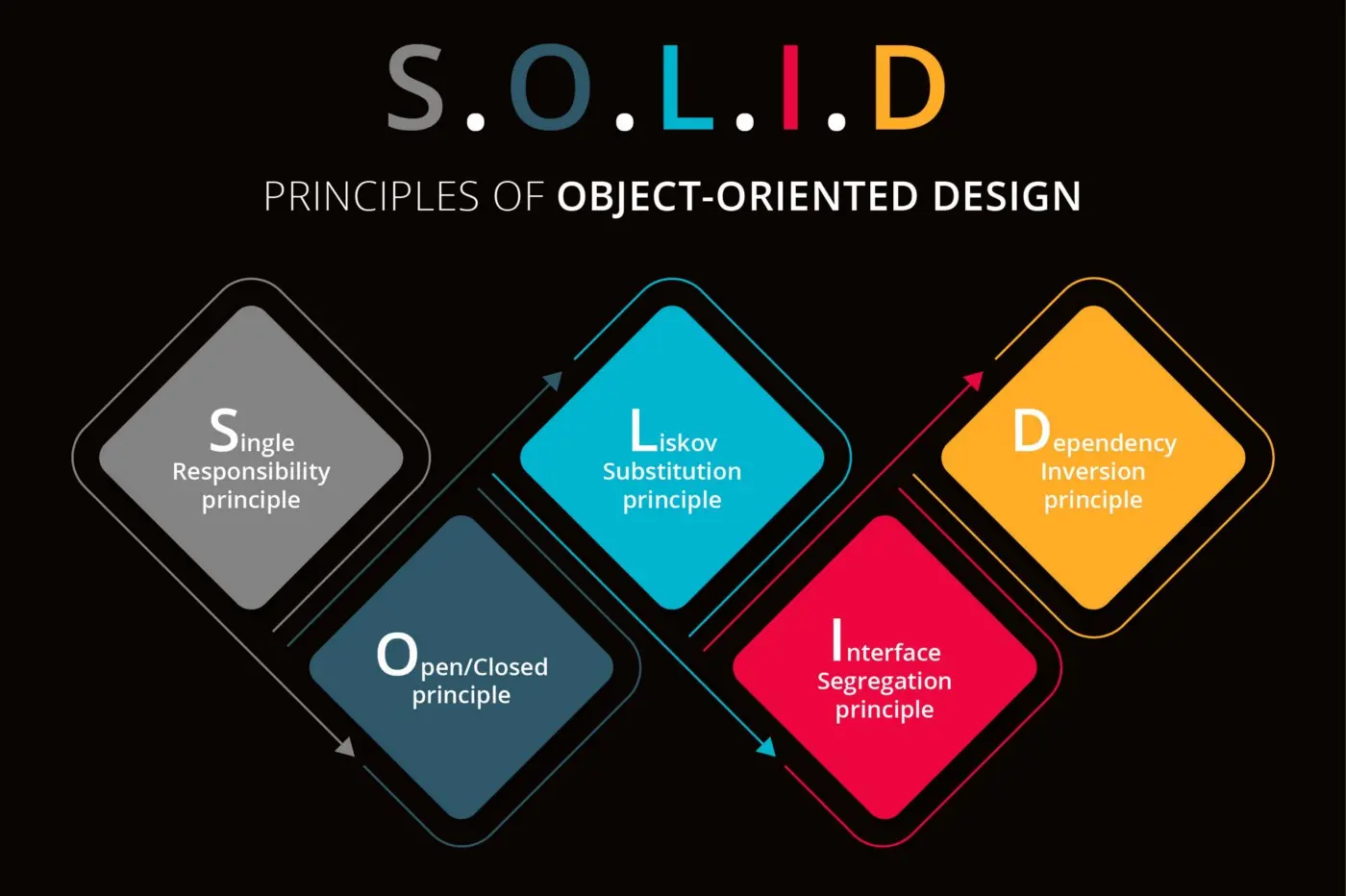In the bustling realm of software development, where complexity reigns and deadlines loom, one vital skill separates the code warriors from the mere scribblers: mastering the art of object-oriented design (OOD). But simply wielding objects like weapons isn’t enough. To forge truly resilient and adaptable software, you need a guiding philosophy, a set of principles etched in the code itself. Enter the SOLID principles – your five-pronged shield against the chaos of ever-evolving requirements.
These five principles, more than mere rules, are guiding lights illuminating the path towards maintainable, flexible, and effortlessly extendable code. Embracing them isn’t just about impressing your peers; it’s about crafting software that stands the test of time, code that welcomes change with open arms, not shudders in fear.
Let’s embark on a deep dive into each principle, dissecting its essence and wielding it like a code-carving chisel:
1. Single Responsibility Principle (SRP): Imagine a Swiss Army Knife. While versatile, it can be clunky and inefficient for a specific task. The SRP advocates the opposite: focus each class on a single, well-defined responsibility. Think of it as a laser-sharp scalpel, designed for cohesive, easy-to-understand code that’s less prone to errors and easier to maintain.
2. Open-Closed Principle (OCP): Remember building with Lego? You want stable, reliable blocks, yet compatible with future additions. The OCP embodies this: design your classes to be open for extension, but closed for modification. New features should seamlessly integrate without altering existing code, ensuring a smoothly evolving codebase.
3. Liskov Substitution Principle (LSP): Picture borrowing a wrench expecting a hammer. The LSP prevents such mishaps in the world of objects. It states that subtypes should be substitutable for their base types without altering the program’s correctness. In simpler terms, your “specialized wrench” should still function like a wrench, even if it has fancy new features.
4. Interface Segregation Principle (ISP): Picture a remote control with too many buttons, most of which you never use. The ISP suggests avoiding such clutter. It encourages the creation of small, specialized interfaces rather than one large, all-encompassing one. This improves code clarity, reduces coupling, and allows for more flexible component interaction.
5. Dependency Inversion Principle (DIP): Imagine relying on a single friend for all your needs. What happens when they’re unavailable? The DIP proposes a healthier approach: depend on abstractions, not on concretions. This means relying on interfaces and abstract classes, not specific implementations. This decouples your code, making it more adaptable and easier to test and maintain.
But mastering these principles is a journey, not a destination. Here are some tips to guide your path:
- Practice makes perfect: Start applying the SOLID principles in small projects, gradually honing your skills.
- Seek inspiration: Learn from the experiences of other developers and leverage established design patterns.
- Embrace tools: Utilize code analysis tools and refactoring techniques to identify and address violations of the SOLID principles.
- Remember, code is communication: Write clear, well-documented code that future developers can readily understand and extend.
By internalizing these principles and weaving them into the fabric of your code, you’ll witness a transformation. Your software will become a fortress of clarity, flexibility, and maintainability, ready to weather the storms of future changes. So, take up the shield of the SOLID principles, become a champion of clean code, and conquer the realm of software development with elegance and efficiency!
